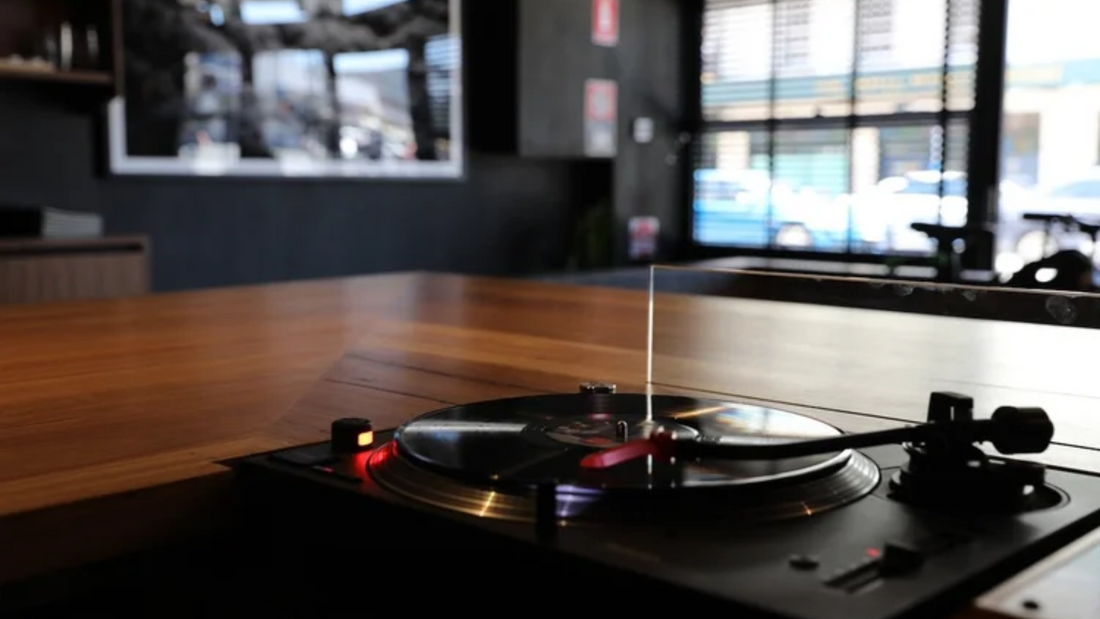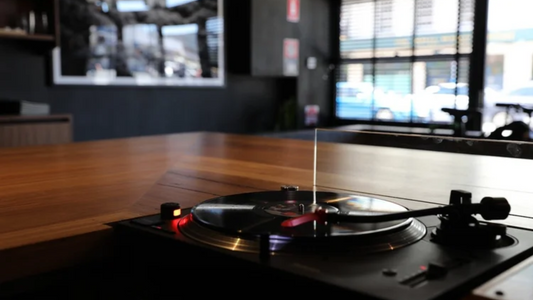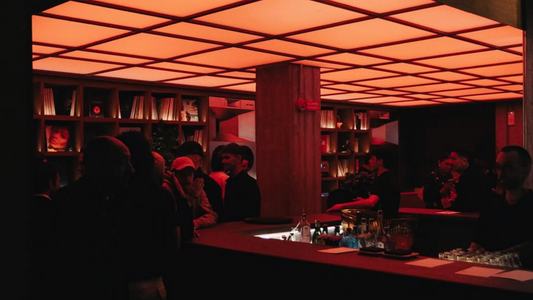
Ante, Newtown — Sydney’s Japanese Sake Listening Bar
By Rafi Mercer
New Listing
Ante is one of Newtown’s most finely tuned listening bars — explore more in our Australia Music Venues guide.
Venue Name: Ante
Address: 146 King Street, Newtown, NSW, Australia
Website: ante.bar
Instagram: @ante_syd
Spotify Profile: None
Ante is a whisper in a neighbourhood of noise, a shaft of ink-black calm carved into the chaos of King Street, Newtown. From the moment you cross its threshold, you sense that nothing here is accidental—the low wood glow of the giant bar; the hush punctuated only by vinyl crackle; the distant hum of conversation and the deeper, richer sound that carries from stylus to speaker. Ante was co-founded by Matt Young, known for Black Market Sake, and chef Jemma Whiteman, whose cooking blurs Japanese precision with European looseness. Above the long blackbutt timber counter, illuminated racks hold around 2,500 LPs from Young’s own collection, their spines lit like a library tuned to woofer-low frequencies. Panels on the ceiling and walls are chosen less for decoration than for resonance, lulling the room into quiet balance, while timber floors add warmth and carry the vibrations of footsteps and basslines alike. What emerges is a room tuned like an instrument, one that breathes with the music it holds.
At Ante, the idea of the Japanese jazz kissaten is translated into Sydney vernacular. The bar is not themed but inspired, drawing from the philosophy that music is not background but atmosphere, not decoration but structure. The sake program follows the same logic. Young curates more than sixty bottles from twenty-one independent Japanese breweries, arranged not as a static list but as a conversation. To drink here is to be guided: perhaps towards a floral, ephemeral ginjo with a bright, crisp finish that suits a Miles Davis solo, or towards an earthy, muscular junmai that grounds a Bill Evans ballad in deep resonance. The bartenders are interpreters as much as servers, reading mood as carefully as they pour.
Food arrives as an echo of sound, plates composed with rhythm in mind. Whiteman’s tagliatelle with fermented shiitake and Parmigiano is symphonic, stacking umami in dense, layered chords. Potato mochi wrapped in nori with “everything” bagel seasoning is playful percussion, chewy and crunchy, a backbeat between tracks. Trevally crudo brightened with kosho and persimmon is sharp, bright, briny, a trumpet’s call at the top of a song. Desserts, like sorbet with sake jelly and kasu cream, arrive as encores—floral, sharp, layered, as though the palate itself were improvising. Everything here is pared back, deliberate, curated.
The absence of a live stage is itself a gesture. The performance is the playback, the ritual of pulling a record from its sleeve, brushing it clean, lowering the needle. The crackle before the groove catches is as thrilling as silence before applause. People lean in, voices lower, even laughter folds itself into the mix rather than cutting across it. The room disciplines and rewards its audience without effort. It is intimacy without preciousness, reverence without rigidity. Ante does not replicate Tokyo’s kissaten silence but reshapes it into something Australian: conversational, fluid, relaxed yet respectful. What remains is fidelity, not just of sound but of intent.
The paradox of Ante is its coexistence with the chaos of Newtown outside. King Street is alive with students and bohemians, the shouts of pubs, the heat of late-night food. Inside, by contrast, time recalibrates itself to the length of a record side. You may arrive for one drink and find yourself lingering three albums later, lulled by the precision of the mix and the softness of the room. There is no rush here, no sense of turnover. The bar encourages enough, not excess; curation, not abundance. The sociability is subtle: a couple sipping sake in tandem with Coltrane, two friends dissecting the link between ambient techno and free jazz, someone alone watching light refract in their glass. Each presence is solitary but connected, listening together yet apart.
Ante’s design makes this possible: blackbutt timber, dark stone, muted light, shelves that act as acoustic diffusers, panels that bend sound gently downward, a floor that resonates warmly. The room itself is an instrument, and guests play it simply by being present. Service follows the same tempo: unobtrusive, knowing, never hurried. Staff guide with the confidence of people who live the room as much as work it, who understand that to pour sake or cue a record is to shape an experience. There is no performance of knowledge, only its quiet sharing.
Nights here feel both fleeting and endless. As records turn and sake is poured, the outside world recedes. When you do eventually leave, the return to the street feels abrupt, the brightness of shops and the clamour of voices suddenly overwhelming. Yet you carry something with you: the memory of sound not as loudness but as clarity, of sake as resonance, of a space that reminded you that listening is itself an art. Ante demonstrates that curation is luxury, that attention is wealth, that a room tuned carefully enough can tune the people within it. It is more than a bar or restaurant—it is proof that every experience is defined by the sound you hear, that architecture can be made of air and frequency as much as of walls and stone, and that music, sake, and food can together create not just an evening but a state of mind.
Rafi Mercer writes about the spaces where music matters. For more stories from Tracks & Tales, subscribe here, or click here to read more.






